
Filter News
Area of Research
- Advanced Manufacturing (11)
- Biological Systems (3)
- Biology and Environment (40)
- Biology and Soft Matter (1)
- Building Technologies (3)
- Chemical and Engineering Materials (2)
- Chemistry and Physics at Interfaces (6)
- Computational Biology (1)
- Computational Chemistry (1)
- Computational Engineering (2)
- Computer Science (4)
- Electricity and Smart Grid (1)
- Energy Frontier Research Centers (7)
- Energy Science (114)
- Functional Materials for Energy (6)
- Fusion and Fission (16)
- Fusion Energy (4)
- Geographic Information Science and Technology (2)
- Isotope Development and Production (1)
- Isotopes (14)
- Materials (57)
- Materials for Computing (18)
- Materials Synthesis from Atoms to Systems (5)
- Materials Under Extremes (6)
- Mathematics (1)
- National Security (11)
- Neutron Data Analysis and Visualization (2)
- Neutron Science (32)
- Nuclear Science and Technology (8)
- Quantum Condensed Matter (2)
- Quantum information Science (3)
- Reactor Technology (1)
- Sensors and Controls (1)
- Supercomputing (48)
- Transportation Systems (3)
News Type
Date
News Topics
- 3-D Printing/Advanced Manufacturing (57)
- Advanced Reactors (7)
- Artificial Intelligence (52)
- Big Data (33)
- Bioenergy (29)
- Biology (45)
- Biomedical (23)
- Biotechnology (15)
- Buildings (42)
- Chemical Sciences (37)
- Clean Water (14)
- Composites (17)
- Computer Science (76)
- Coronavirus (10)
- Critical Materials (12)
- Cybersecurity (5)
- Education (2)
- Emergency (3)
- Energy Storage (36)
- Environment (77)
- Exascale Computing (27)
- Fossil Energy (4)
- Frontier (25)
- Fusion (21)
- Grid (26)
- High-Performance Computing (64)
- Hydropower (1)
- Isotopes (29)
- ITER (6)
- Machine Learning (24)
- Materials (56)
- Materials Science (50)
- Mathematics (8)
- Mercury (3)
- Microelectronics (2)
- Microscopy (14)
- Molten Salt (1)
- Nanotechnology (12)
- National Security (41)
- Neutron Science (43)
- Nuclear Energy (24)
- Partnerships (29)
- Physics (12)
- Polymers (10)
- Quantum Computing (25)
- Quantum Science (34)
- Security (11)
- Simulation (24)
- Space Exploration (9)
- Statistics (4)
- Summit (23)
- Transportation (36)
Media Contacts

Twenty-seven ORNL researchers Zoomed into 11 middle schools across Tennessee during the annual Engineers Week in February. East Tennessee schools throughout Oak Ridge and Roane, Sevier, Blount and Loudon counties participated, with three West Tennessee schools joining in.
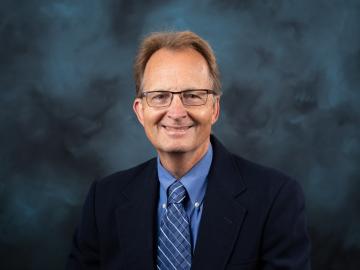
Stan Wullschleger has been selected as the associate laboratory director for the Biological and Environmental Systems Science Directorate, or BESSD, at ORNL.
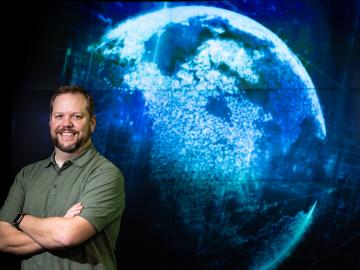
Cory Stuart of ORNL applies his expertise as a systems engineer to ensure the secure and timely transfer of millions of measurements of Earth’s atmosphere, fueling science around the world.

Balendra Sutharshan, deputy associate laboratory director for operational systems at DOE’s Pacific Northwest National Laboratory, has joined ORNL as associate laboratory director for the Isotope Science and Engineering Directorate.
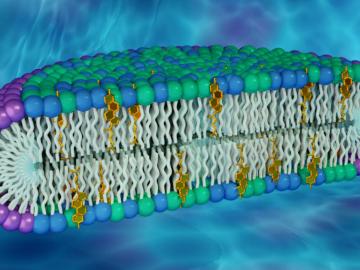
Researchers believe that proteins could behave differently in lipid raft environments, compared to non-raft regions in a membrane, but this hypothesis has not been fully evaluated. One reason is that membrane models used to study membrane proteins rarely contain rafts.
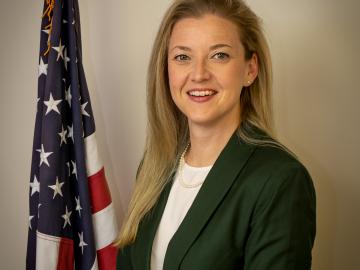
Joan Bienvenue has been selected as the first executive director of the Oak Ridge Institute at the University of Tennessee, established last year to align the expertise and infrastructure of Oak Ridge National Laboratory and the university in support of world-leading research and talent development. As director, Bienvenue will also serve as a vice provost at UT. She begins her new position March 8.
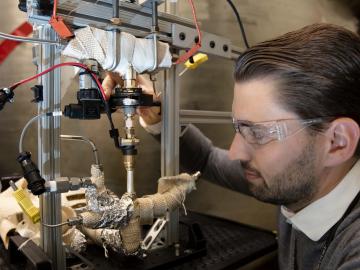
For a researcher who started out in mechanical engineering with a focus on engine combustion, Martin Wissink has learned a lot about neutrons on the job

To better understand the spread of SARS-CoV-2, the virus that causes COVID-19, Oak Ridge National Laboratory researchers have harnessed the power of supercomputers to accurately model the spike protein that binds the novel coronavirus to a human cell receptor.
A study by Oak Ridge National Laboratory, the University of Copenhagen, the National Park Service and the U.S. Geological Survey showed that hotter summers and permafrost loss are causing colder water to flow into Arctic streams, which could impact sensitive fish and other wildlife.

Oak Ridge National Laboratory researchers have demonstrated that a new class of superalloys made of cobalt and nickel remains crack-free and defect-resistant in extreme heat, making them conducive for use in metal-based 3D printing applications.


